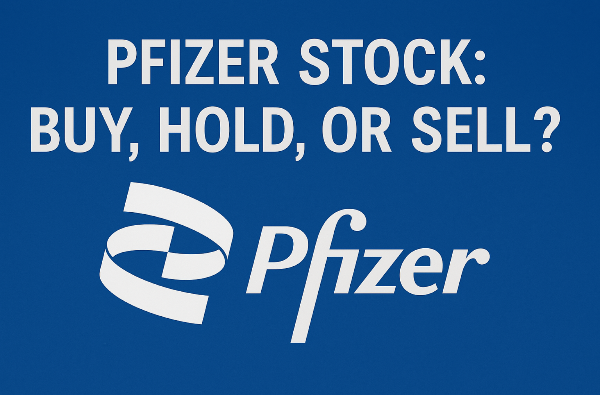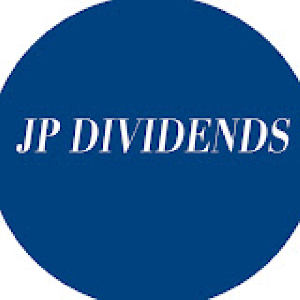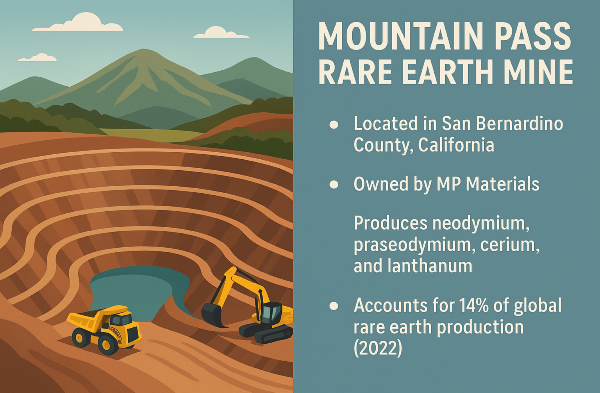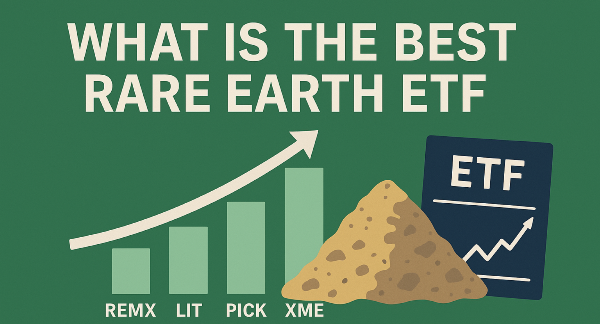Introduction
Today, we're taking a closer look at Pfizer (PFE) stock to determine whether it's a buy, hold, or sell. We'll break down:
- How Pfizer makes money
- Pfizer’s financials and dividend analysis
- A look at valuation to determine its intrinsic value
Pfizer Stock Performance
Pfizer has had a rough ride over the past few years.
- Year-to-date: Down 14%
- Past 1 year: Down 27% since its peak in July
- 5-year return: Mediocre overall, with the stock down 61% from its peak in December 2021
Clearly, Pfizer has been beaten up significantly, which raises the question—is this a buying opportunity or a warning sign?
How Pfizer Makes Money
Pfizer is a global biopharmaceutical giant generating revenue from developing, manufacturing, and selling biopharmaceutical products. These products come from sources such as organs, tissues, microorganisms, and animal fluids through biotechnological processes.
Most recently, Pfizer gained major recognition due to its COVID-19 vaccine, which spiked revenue significantly. Pfizer and Moderna were the primary vaccine providers during the pandemic, driving temporary financial gains that have since dropped off.
Competitive Challenges
Pfizer operates in a highly competitive and heavily regulated industry.
- Before launching any pharmaceutical product, the company must invest heavily in research and development to gain regulatory approval.
- Competition is fierce, with major rivals such as Merck, Moderna, Johnson & Johnson, and Gilead Sciences.
Despite being a long-established pharmaceutical leader, Pfizer faces challenges in sustaining strong growth in this landscape.
Pfizer Financials
Revenue
Pfizer’s revenue trend is flat over the years:
- 2010 revenue: $65 billion
- 2024 revenue (TTM): $63 billion
The company saw a huge spike due to COVID-19, reaching $101 billion in 2022, but since then, revenue has fallen significantly. Although the past few quarters show some recovery, the long-term trend is not promising.
Net Income
Net income follows a similar flat trajectory:
- 2011: $8.4 billion
- 2024: $8 billion
Despite short-term COVID-driven momentum, Pfizer has not demonstrated strong growth in profitability over the years.
Free Cash Flow
This is where things start to look alarming. Pfizer's free cash flow has been on a declining trend:
- 2011: $18 billion
- 2024: $9 billion
That’s a 50% drop in free cash flow—a critical financial metric for determining future business sustainability.
Financial Metrics
When analyzing Pfizer, it's crucial to examine key financial indicators:
- PE Ratio: 16 – A low valuation, which aligns with its lack of strong growth.
- Net Profit Margin: 12.6% – Solid profitability, though not exceptional.
- ROA (Return on Assets): 4.6% – Slightly below the preferred 5%+ mark.
- ROE (Return on Equity): Below 15% – Not meeting the ideal threshold for strong returns.
While Pfizer's profitability metrics are decent, they don’t indicate explosive growth. The business remains stable but lacks upward momentum, which is a concern for long-term investors.
Pfizer’s Dividend: High Yield, But Is It Safe?
One of Pfizer’s most appealing features is its dividend yield, which has climbed to 8% due to the stock’s recent decline. This is high for a non-REIT or non-BDC company, making it attractive for income-focused investors.
Here’s a breakdown of Pfizer’s dividend stats:
- Payout Ratio: 54% – A manageable level.
- 5-Year Dividend Growth Rate: 4% – Modest, but consistent.
- Dividend Growth History: 14 years – A reliable track record.
Is the Dividend at Risk?
While Pfizer has a solid dividend history, concerns arise due to its shrinking free cash flow.
- Cash Flow Payout Ratio: Ideally 20%-40% for safety; Pfizer sits at 60%, which is acceptable but concerning.
- Red Flag: If free cash flow continues declining, dividend sustainability could become problematic.
With free cash flow dropping from $18 billion to $9 billion, further declines could put the dividend in jeopardy, especially as Pfizer allocates capital to R&D, debt repayment, and acquisitions.
Valuation: Is Pfizer Undervalued?
Pfizer is currently trading at $23 per share, but valuation models suggest significant upside:
- Discounted Cash Flow (DCF) Model: $33 per share
- Simply Wall Street Estimate: $71 per share
- Average Fair Price Estimate: $52 per share (128% upside)
While Simply Wall Street is very bullish, its assumptions about future cash flow growth may be overly optimistic. Pfizer’s volatile cash flow over recent years makes valuation estimates tricky.
Final Verdict: Should You Buy Pfizer Stock?
Reasons to Avoid Pfizer:
- Highly Regulated Industry: Heavy R&D and approval costs limit growth potential.
- COVID Momentum Fizzled Out: Revenue and net income remain flat post-pandemic.
- Shrinking Free Cash Flow: A long-term risk, potentially threatening dividend stability.
- Dividend Growth Rate is Low: At 4-5%, Pfizer’s dividend growth isn’t impressive.
Potential Upside?
- Valuation Indicates Possible Undervaluation: If Pfizer stabilizes free cash flow, it could have upside potential.
- Dividend Yield is Attractive: At 7-8%, some investors may see a buying opportunity.
My Take?
Pfizer is not a buy right now. The combination of flat growth, industry challenges, and free cash flow concerns makes it too risky for my liking. While some may see value in the high yield, I’d rather wait for a stronger financial outlook before considering an investment.
What’s Your Take?
Do you think Pfizer is a buy, hold, or sell? Comment down below! If you found this analysis helpful, drop a like and hit subscribe for more stock breakdowns!
More Stocks Like Pfizer
Here’s a markdown table with five stocks similar to Pfizer, including links to their investor relations pages and stock symbols:
| Company Name |
Symbol |
Description |
| Johnson & Johnson |
JNJ |
A global healthcare giant specializing in pharmaceuticals, medical devices, and consumer health products. |
| AbbVie |
ABBV |
A biopharmaceutical company known for its immunology and oncology treatments, including Humira. |
| Merck & Co. |
MRK |
A leading pharmaceutical company focused on vaccines, oncology, and infectious disease treatments. |
| Bristol-Myers Squibb |
BMY |
A pharmaceutical company specializing in cancer, cardiovascular, and immunology therapies. |
| Zoetis |
ZTS |
A global leader in animal health, providing medicines and vaccines for livestock and pets. |
https://youtu.be/A7cao0On7ww?si=y6BZn1Q9_g7CYSx1




























Introduction
Today, we're taking a closer look at Pfizer (PFE) stock to determine whether it's a buy, hold, or sell. We'll break down:
Pfizer Stock Performance
Pfizer has had a rough ride over the past few years.
Clearly, Pfizer has been beaten up significantly, which raises the question—is this a buying opportunity or a warning sign?
How Pfizer Makes Money
Pfizer is a global biopharmaceutical giant generating revenue from developing, manufacturing, and selling biopharmaceutical products. These products come from sources such as organs, tissues, microorganisms, and animal fluids through biotechnological processes.
Most recently, Pfizer gained major recognition due to its COVID-19 vaccine, which spiked revenue significantly. Pfizer and Moderna were the primary vaccine providers during the pandemic, driving temporary financial gains that have since dropped off.
Competitive Challenges
Pfizer operates in a highly competitive and heavily regulated industry.
Despite being a long-established pharmaceutical leader, Pfizer faces challenges in sustaining strong growth in this landscape.
Pfizer Financials
Revenue
Pfizer’s revenue trend is flat over the years:
The company saw a huge spike due to COVID-19, reaching $101 billion in 2022, but since then, revenue has fallen significantly. Although the past few quarters show some recovery, the long-term trend is not promising.
Net Income
Net income follows a similar flat trajectory:
Despite short-term COVID-driven momentum, Pfizer has not demonstrated strong growth in profitability over the years.
Free Cash Flow
This is where things start to look alarming. Pfizer's free cash flow has been on a declining trend:
That’s a 50% drop in free cash flow—a critical financial metric for determining future business sustainability.
Financial Metrics
When analyzing Pfizer, it's crucial to examine key financial indicators:
While Pfizer's profitability metrics are decent, they don’t indicate explosive growth. The business remains stable but lacks upward momentum, which is a concern for long-term investors.
Pfizer’s Dividend: High Yield, But Is It Safe?
One of Pfizer’s most appealing features is its dividend yield, which has climbed to 8% due to the stock’s recent decline. This is high for a non-REIT or non-BDC company, making it attractive for income-focused investors.
Here’s a breakdown of Pfizer’s dividend stats:
Is the Dividend at Risk?
While Pfizer has a solid dividend history, concerns arise due to its shrinking free cash flow.
With free cash flow dropping from $18 billion to $9 billion, further declines could put the dividend in jeopardy, especially as Pfizer allocates capital to R&D, debt repayment, and acquisitions.
Valuation: Is Pfizer Undervalued?
Pfizer is currently trading at $23 per share, but valuation models suggest significant upside:
While Simply Wall Street is very bullish, its assumptions about future cash flow growth may be overly optimistic. Pfizer’s volatile cash flow over recent years makes valuation estimates tricky.
Final Verdict: Should You Buy Pfizer Stock?
Reasons to Avoid Pfizer:
Potential Upside?
My Take?
Pfizer is not a buy right now. The combination of flat growth, industry challenges, and free cash flow concerns makes it too risky for my liking. While some may see value in the high yield, I’d rather wait for a stronger financial outlook before considering an investment.
What’s Your Take?
Do you think Pfizer is a buy, hold, or sell? Comment down below! If you found this analysis helpful, drop a like and hit subscribe for more stock breakdowns!
More Stocks Like Pfizer
Here’s a markdown table with five stocks similar to Pfizer, including links to their investor relations pages and stock symbols:
https://youtu.be/A7cao0On7ww?si=y6BZn1Q9_g7CYSx1